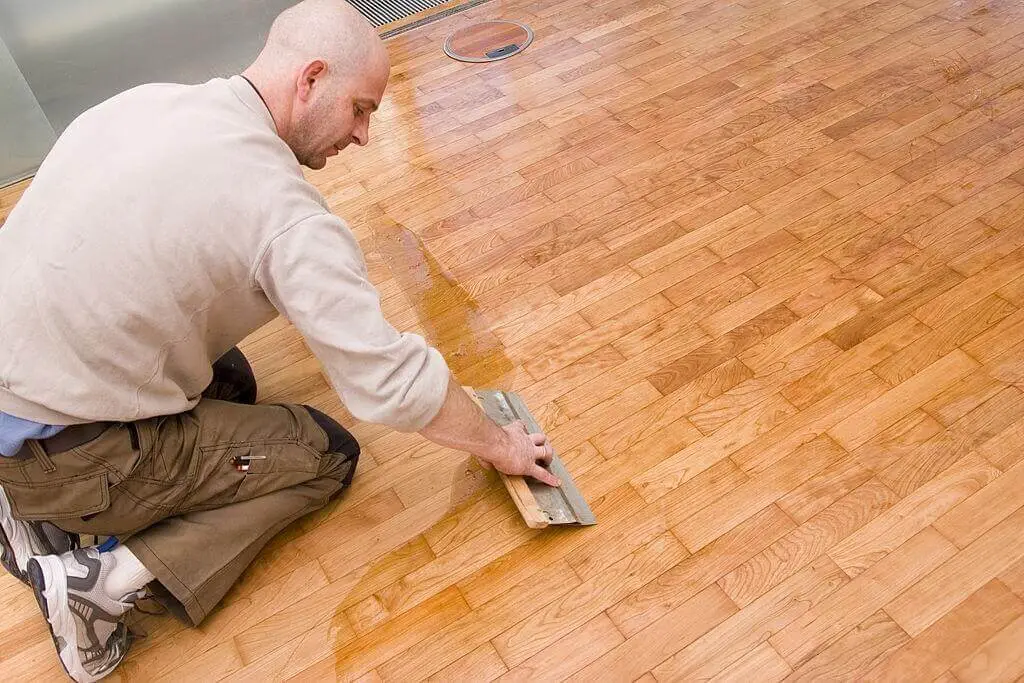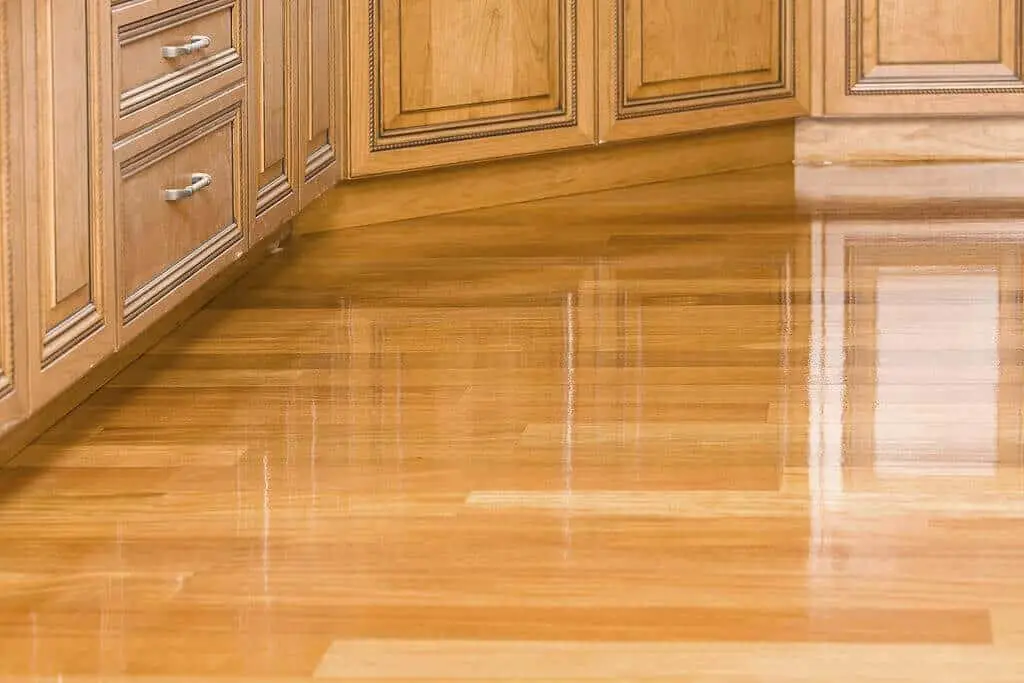You probably just finished a home project, and you are wondering how long before you are able to walk on the new floor and move furniture back in.
How long does polyurethane take to cure? Generally, it takes an oil-based polyurethane 24hours to dry and water-based polyurethane takes about 6 hours to become dry to the touch and allow slight traffic, so you can complete the finishes process.
It also depends on a number of factors, how long does it take polyurethane to dry depends on the type of polyurethane you are using, the porosity of the surface you are applying it to and a couple of other factors.
One important point of note is that there’s a difference between polyurethane drying time and curing time. It takes anywhere within a month for a polyurethane finish to cure completely.
Related: Best Floor Wax
Difference Between Drying and Curing
Table of Contents
Drying Time
Drying is the first phase that a polyurethane goes through, it is basically what it is, the drying time is how long it takes to be able to place a palm directly on the floor without leaving any marks or having any finish residue on your palm.
Once the drying time is complete, you can be able to carefully walk on your floor without damaging it, this allows you to add extra layers of finish and complete sanding.
During this drying time, the solvent dries up leaving behind the resin which forms the protective layer that gives your floor the much needed protection.
Though your floor is technically dried at this point, it can still be damaged by dirt on the bottom of your shoes or oil on your feet.
You want to wait till all the coats are applied and dried before opening up traffic in that room, only walk on the floors when extremely necessary.
Read: How to refinish pine floors
You also want to wait for up to 3-7 days before returning the furniture, and if you can’t keep your furniture out of the room that long, you want to wait for at least 2 days before moving in your furniture, for extra precaution you can replace all the felt pads underneath your furniture.
This is because the old one might have accumulated dust, dirt and pet hairs which could ruin your newly finished floor.
If you have area rugs you want to keep them off the floor also for about 2weeks, because they could alter the curing process by trapping solvents in the wood.
The Drying Time of Water-Based Polyurethane
Water based polyurethane dries faster than oil-based polyurethane because it consists of water evaporating, and water dries faster than oil
- 4-6 hrs before you can walk on the floors
- Hours 6-24, you can walk on the floors with socks. Avoid shoes and bare feet to prevent tracking in dirt and oil that can ruin your new floor. Prevent your pets from walking on the floors during this period
- 1 hrs you can walk on it with shoes
- After 2 days, you can move furniture back.
- It takes a full 30 days for the floors to cure, so it’s ideal to wait at least 30 days before putting area rugs on the surface. If you want to put area rugs back sooner, than 2 weeks is another good benchmark.
The Drying Time of an Oil Based Polyurethane
Generally, the oil-based polyurethane products take a longer time to dry compared to their water-based counterparts.
- 24 hrs before you can walk on the floors
- Hours 24-48, you can walk on the floors with socks. Avoid shoes and bare feet. And, make sure your pets do not walk on the floors during this time.
- 48 hrs you can walk on it with shoes
- After 4 days, you can move furniture back on to the floors.
- It’s ideal to wait 1-2 weeks before dogs walk on the floors (unless they use doggie socks)
- It takes a full 30 days for the floors to cure, so it’s ideal to wait 30 days before putting area rugs on the surface. If you need to/want to put them on sooner, 2 weeks is another good benchmark, but 30 days is better.
Curing Time
This is the second phase where a chemical process known as crosslinking happens, it is a process where molecular bonds are formed to link two polymers together.
This happens as soon as the solvent present in the polyurethane dries out causing the poly resin to start reacting with the oxygen in the air.
During this process the polyurethane starts to form a plastic-like layer that gives your floor protection for many years to come. The polyurethane plays the role of a polymer molecule, while oxygen plays the role of forming the crosslink.
After applying the adequate amount of coating to the floor, the resins present in each coat will be crosslinked to form a single matrix that changes into a large molecule the size of the room’s coating, this is what helps to protect your floor from constant wear and tear.
The curing timd totally depends on the airflow in the room and the humidity level in your region. Once the floor is completely cured, you can subject the floor to high traffic without fearing damage to the floor, this takes approximately 30 days.
Read: How to remove polyurethane from wood
Factors That Affect the Curing and Drying Time of Polyurethane
Type of Polyurethane
This is the major factor that affects the drying and curing time of polyurethane, like stated above oil-based polyurethane drying time is different from water-based drying time.
Other factors like adding of stains or color, adding oil or other type of solvents also has an impact on this and also the type of surface the finish was applied but generally water-based polyurethane dry faster than oil-based.
Humidity level
As stated above, different polyurethane have different curing and drying times, this also applies to humidity levels. But the standard humidity level is at least 70% humidity and a temperature of 21 degrees celsius.
If the humidity and temperature level drop its going to extend the drying time for like another 12 hours depending on the polyurethane, likewise if its a hot day, its going to take shorter time to dry.
Type of Starting Surface
A properly sanded wood will absorb the first layer of coating very quickly that a wood that isn’t sanded. Once the first coat wets the wood, it absorbs it and drys it up quickly but subsequent coating will take a longer time to dry.
Type of Wood
Some woods don’t cure properly because they produce chemicals that inhibit the cross-linking process. Rosewoods and some aromatic cedars are included in this category.
Safety tips
- While the polyurethane is drying and curing, oil-based systems smell a lot worse and contain chemicals in the solvent that can be harmful to your respiratory system.
Water-based polyurethane doesn’t smell as bad as the oil-based systems, but the cautions still apply. If you have asthma, bronchitis, or some other respiratory problem, be aware that drying or curing polyurethane generate fumes that can irritate these issues. Once the floor is fully cured, there is no further cause for concern.
- Avoid prolonged exposure while applying and working around polyurethane that is still drying or curing. Make sure the area is well ventilated. Follow directions.
- Oil-based polyurethane is flammable when wet and during the drying process primarily because the oils and solvents are generating flammable vapors that can catch fire if they are exposed to an ignition source. This applies to wet rags used to wipe up any liquids. Water-based systems are not flammable.
- Avoid smoking or activities that could potentially generate sparks. If using oil-based polyurethane, consider having a fire extinguisher handy. Always follow directions.

